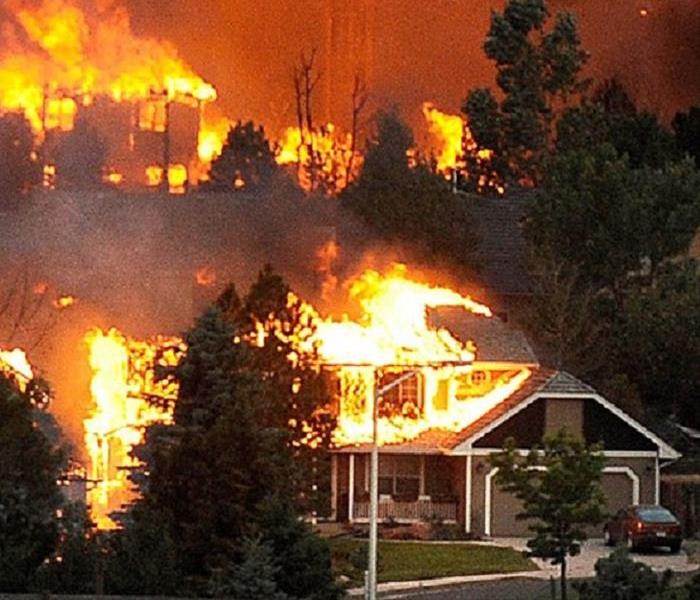Summer is Almost Here, as Fire Season is also Approaching Palo Alto, Menlo Park, Portola Valley
9/23/2015 (Permalink)
As Californians, we know the real threat of wildfires. California residents need to be more aware than ever on how best to protect their homes from wildfires.
According to FEMA here are some top ways to protect your property in Palo Alto, Menlo Park, Atherton, Portola Valley and other bay area cities:
Have you thinned out and maintained the vegetation around the house? All vegetation is fuel for a wildfire-therefore the greater the distance between your home and the vegetation, the greater the protection. Create a 30-foot safety zone around the house if possible. At a minimum, create a defensible space of (0-5ft): use noncombustible materials, such as gravel, brick, or concrete in this critical area adjacent to your home. Remove vines from the walls of the house, prune branches and shrubs within 15 ft of chimneys.
Create a second zone of 100 feet reducing or replacing as much of the most flammable vegetation as possible.If you live on a hill, you may need to extend the zone for several hundred feet.
Are combustibe materials away from the house? Identify all combustible materials outside the house, stack firewood 100ft away and uphill from the house. Keep the gas grill and propane tank at least 15 ft from the house and place a mesh screen over the grill.
Is the roof made of non combustible materials? Materials that are fire resistant include single ply membranes, fiberglass shingles, slate, metal, clay and concrete tile. Clean debris from roof since debris can be ignited by wind-blown embers.
Are sundecks and porches enclosed underneath? Are eaves and overhangs enclosed? Clear leaves, trash and other fire hazards away from decks and porches, extend 1/2 inch mesh screen from all overhands down to the ground. Enclose all eaves to reduce the hazard.
Clean out gutters regularly: keep debris ouf of gutters since debris can be ignited by wind-blown embers. If used, gutter covers should be non-combustible.
Are house vents covered with wire mesh? Any attic vent, soffit vent, or other opening can allow embers and flaming debris to enter a home and ignite it. Cover all openings with an 1/4 inch or smaller corrosion-resistant wire mesh. Are chimneys and stovepipes covered with spark arrestors? Use 12-gauge spark arrestors or woven wire mesh to prevent this hazard.
Is the house siding fire resistant? Stucco, metal, brick and cement, concrete and rock are all fire resistant and should be used. You can treate wood siding with UL-approved fire retardant chemicals but these treatments are not permanent.
Have windows been treated to reduce the risk? Dual or triple-paned thermal glass and fire resistant shutters or drapes, help reduce wildfire risk. Tempered glass windos and noncombustible awnings can also help reduce your risk.



 24/7 Emergency Service
24/7 Emergency Service
